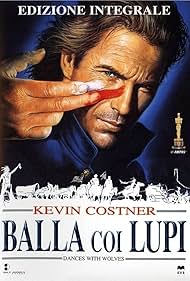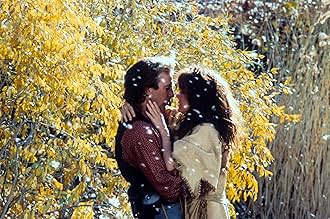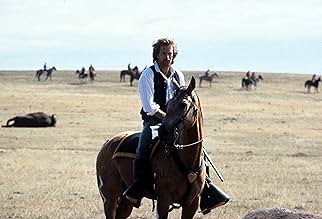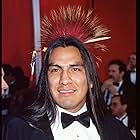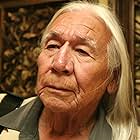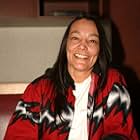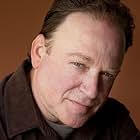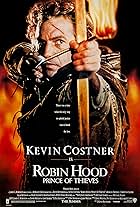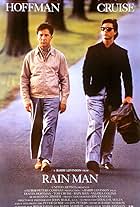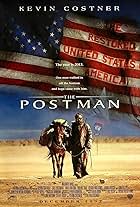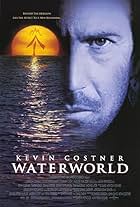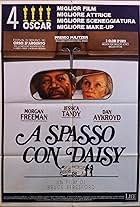Il tenente John Dumbar, assegnato ad un avamposto remoto durante la guerra civile, diventa amico di lupi ed indiani, inimicandosi i suoi superiori nell'esercito.Il tenente John Dumbar, assegnato ad un avamposto remoto durante la guerra civile, diventa amico di lupi ed indiani, inimicandosi i suoi superiori nell'esercito.Il tenente John Dumbar, assegnato ad un avamposto remoto durante la guerra civile, diventa amico di lupi ed indiani, inimicandosi i suoi superiori nell'esercito.
- Vincitore di 7 Oscar
- 55 vittorie e 39 candidature totali
Floyd 'Red Crow' Westerman
- Ten Bears
- (as Floyd Red Crow Westerman)
Best Picture Winners by Year
Best Picture Winners by Year
See the complete list of Best Picture winners. For fun, use the "sort order" function to rank by IMDb rating and other criteria.
Trama
Lo sapevi?
- QuizBecause of the film's enormous success and sympathetic treatment of the Native Americans, the Lakota Nation adopted Kevin Costner as an honorary member.
- BlooperElectric power lines are visible during the buffalo hunt.
- Citazioni
Wind In His Hair: [in Lakota; subtitled] Dances with Wolves! I am Wind In His Hair. Do you see that I am your friend? Can you see that you will always be my friend?
- Versioni alternativeThe 236-minute "extended version" or "Director's Cut" has been released on home video, altering the movie as such:
- 38 x new scene
- 15 x extended scene
- 12 x alternative footage
- 5 x alternative text
- 1 x new text
- 3 x postponed scene
- 3 x altered arrangement of scenes
- 3 x shortened scene.
- Colonne sonoreFire Dance
By Peter Buffett
Recensione in evidenza
It's hard to think of blockbuster films that portray Native Americans as well as this one does. They are human beings here, with different personalities, intelligence, dignity, culture, and humor. The fact that a major Hollywood film had a good portion of its dialogue spoken in Lakota, subtitled in English, is fantastic. The portrayal of white cruelty, such as in the scene with rotting buffalo carcasses littering the prairie, invert the classic narrative, both in the genre of Westerns and in how history is often taught. The film identifies who the real savages were, and Kevin Costner should get a lot of credit for that.
The film is of epic length, and by no means perfect. I would have preferred it without the love story, and for more centering on the native characters. The soundtrack is also intrusive, and there were many instances where I found myself thinking that the scene would have played more effectively had it been set to minimal audio. As for the criticism that it uses the 'white savior' trope, I didn't see it that way - if anything, Costner's character is the one saved, both spiritually and then physically as he's about to be hanged for treason. It's much more about the beauty of coexistence and of respecting other cultures, and how tragic the historical genocide was.
The film is clearly a labor of love, and Costner took a lot of risks with it. The casting of Native actors quite honestly felt decades ahead of its time, and Graham Greene (Kicking Bird), Rodney A. Grant (Wind In His Hair), and Floyd Red Crow Westerman (Chief Ten Bears) are all wonderful. The cinematography on location mostly in South Dakota is simply stunning. However, what I love most about it is its heart, and how it shows simple appreciation for the Sioux people. "They were a people so eager to laugh, so devoted to family, so dedicated to each other. The only word that comes to mind is harmony," the main character says. Would love to see more films like this, and from a native perspective. 31 years later, it's long overdue, but give Costner credit for what he accomplished in 1990.
The film is of epic length, and by no means perfect. I would have preferred it without the love story, and for more centering on the native characters. The soundtrack is also intrusive, and there were many instances where I found myself thinking that the scene would have played more effectively had it been set to minimal audio. As for the criticism that it uses the 'white savior' trope, I didn't see it that way - if anything, Costner's character is the one saved, both spiritually and then physically as he's about to be hanged for treason. It's much more about the beauty of coexistence and of respecting other cultures, and how tragic the historical genocide was.
The film is clearly a labor of love, and Costner took a lot of risks with it. The casting of Native actors quite honestly felt decades ahead of its time, and Graham Greene (Kicking Bird), Rodney A. Grant (Wind In His Hair), and Floyd Red Crow Westerman (Chief Ten Bears) are all wonderful. The cinematography on location mostly in South Dakota is simply stunning. However, what I love most about it is its heart, and how it shows simple appreciation for the Sioux people. "They were a people so eager to laugh, so devoted to family, so dedicated to each other. The only word that comes to mind is harmony," the main character says. Would love to see more films like this, and from a native perspective. 31 years later, it's long overdue, but give Costner credit for what he accomplished in 1990.
- gbill-74877
- 11 apr 2021
- Permalink
I più visti
Accedi per valutare e creare un elenco di titoli salvati per ottenere consigli personalizzati
Dettagli
- Data di uscita
- Paesi di origine
- Siti ufficiali
- Lingue
- Celebre anche come
- Danza con lobos
- Luoghi delle riprese
- Badlands National Park, South Dakota, Stati Uniti(Fort Hays to Fort Sedgewick Wagon journey)
- Aziende produttrici
- Vedi altri crediti dell’azienda su IMDbPro
Botteghino
- Budget
- 22.000.000 USD (previsto)
- Lordo Stati Uniti e Canada
- 184.208.848 USD
- Fine settimana di apertura Stati Uniti e Canada
- 598.257 USD
- 11 nov 1990
- Lordo in tutto il mondo
- 424.208.848 USD
- Tempo di esecuzione3 ore 1 minuto
- Colore
- Proporzioni
- 2.39 : 1
Contribuisci a questa pagina
Suggerisci una modifica o aggiungi i contenuti mancanti

